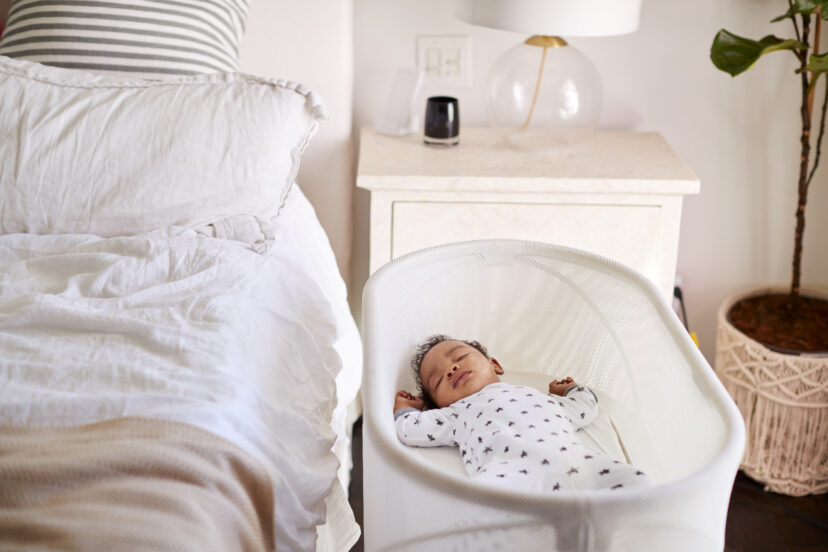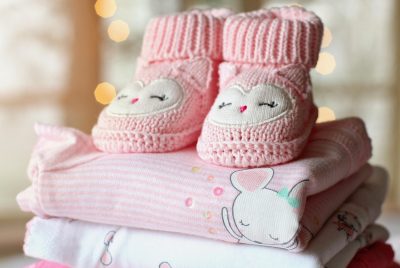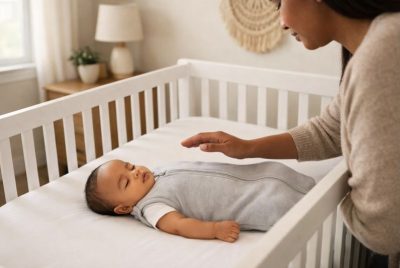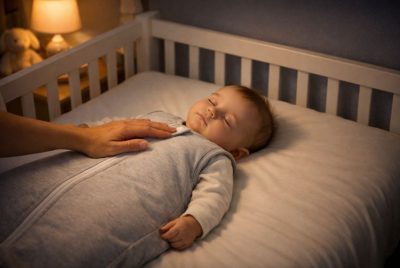Bassinets Baby, Nice Crib: The Pros and Cons of Baby Bassinets
We may earn a commission for purchases made using our links. Please see our disclosure to learn more.
When one is a new parent, the options for one’s baby are dizzying and endless, from first and middle names, to room decor, to whether or not one ought to invest in cloth diapers, to how to feed one’s baby…but perhaps the most important question to ask is: where is my baby going to sleep at night? How do I choose the right bassinets for my baby?
Enter the bassinet: a small cradle-like bed parents can place their newborns in that goes back centuries. Apart from coming in many appealing styles and forms, a bassinet provides a small space that may be comforting to some newborn babies. There are even strollers that have newborn bassinet functions, and some that are multifunctional and even include a changing table and play-yard.
HISTORY OF CRADLES, CRIBS AND BASSINETS
According to the Wholesome Linen, bassinets were used for since the 15th century to provide a safe and cozy place for baby to sleep. They only really caught on the 17th century, where they were constructed from wicker to permit proper airflow around the baby and keep them from getting too hot. The original prototypes were called ‘cradles’ and were constructed of heavy wood, suspended from a beam or wall, and came with a hooded canopy and a straw-filled mattress (hey, what else were they going to use?). As time passed, bassinets evolved over centuries from being essentially wood sculptures to futuristic ‘smart bassinets’ that would respond to infants crying by automatically rocking.

According to Smithsonian Magazine, even during the centuries in which the bassinet and crib evolved, there were many bizarre and often, shall we say, interesting places for babies to sleep. For instance, for example, in the very early aughts, baby rockers were most likely hammocks, with the wooden one described above coming possibly years or even centuries later. The steel cradles emerged in the nineteenth century and were particularly favored for hygienic reasons. When electricity rolled around in 1924, the electric crib became available to the public. And, as the cherry on top, so to speak, there was even a baby crib one could stick out the window like an air conditioner, which mercifully never became popular (children, whilst not my cup of tea, deserve to be in a FAR safer place to sleep than that!). This particular style of crib was created because people thought that being outside was good for you, and especially for little babies. Thank goodness that never caught on…I cannot emphasize this fact enough!

Despite the popularity of cribs and bassinets, mothers used to co-sleep with their children, despite the risk of SIDS, suffocation, and crushing, and there are still those today who are strong proponents of this dangerous trend. A far less dangerous alternative is the use of a bassinet with a collapsible side that can attach to the bed, however, it does not mitigate all the dangers.
AND NOW, FOR THE DIFFERENCES, PERKS, AND DRAWBACKS OF BASSINETS
The difference between this and a crib is that a crib has a larger space in the case of full-size cribs, as well as being more expensive. This article should adequately explain the difference between a crib and a bassinet.
Bassinets provide multiple benefits, such as being able to have the baby closer to you and, as stated above, being more comforting to some newborns. In addition, they are cheaper than cribs, can be portable, and some types even have a rocking function.
Alas, bassinets are not without their drawbacks. Newborns tend to grow out of bassinets much faster than in a crib and they are not as durable. A bassinet can also malfunction easily if too much weight is applied, or a curious toddler inadvertently tips it over when they’re trying to look at the baby. On top of that, it will unfortunately add to your already growing bills, as you may need to purchase a crib alongside it when the newborn does outgrow it.
Cribs, on the other hand, are far, far better investments even though they are expensive. For instance, babies have more room to stretch and move about, as opposed to a bassinet which allows for very little movement. They are also much more durable and can be adjusted to meet a growing baby’s needs. Cribs may even come with their own set of nursery furniture, which in turn is more economical as opposed to buying a bassinet and a crib and nursery furniture.
That is not to say, however, that cribs do not have their own set of problems. If one has a small bedroom, for example, a crib may not be able to adequately fit in it. As previously stated, cribs come with a very dear price tag, in part due to their materials and the fact they often come bundled with other furniture sets. Furthermore, not every baby feels comfortable in a crib. Cribs tend to be larger and more open and thus may not be comforting to babies that favor smaller spaces.
However, irrespective of whether one choose a crib or a bassinet, here are important things to keep in mind. Firstly, the material must be reasonably sturdy and have no gaps which would lead to the baby getting stuck and potentially suffocating. In fact, for this reason alone, this is why one should never invest in a drop-side crib…they are illegal anyway.
Also, one should not feel that they must use Great-Aunt Bertha’s antique crib to raise their baby in. Most of these cribs are out of date by many standards and may come with plenty of hazards of their own. The same applies for antique bassinets. Before using any crib or bassinet, whether new, used or antique, one should always check for hazards such as gaps, exposed nails, lead paint and other hazardous materials. And lastly, never, ever, ever, ever use a crib that is more than ten years old or has been modified in some way.

And of course, one must always follow the pediatric guidelines for putting a baby to sleep. Always place the baby to sleep on their backs, never use anything soft in the crib other than a fitted sheet, and never, ever, share the bed with the baby. It is also imperative that one shares a room with the baby until they are at least six months. In addition, it is important to remember that a bassinet has shallow sides and may collapse once a baby is old enough to being rolling about. It is at this time they must be transferred to a crib for safety.
Some final words: though a bassinet may seem like a good choice, they have a load-bearing limit of ten to fifteen pounds, according to VeryWell Family. If your infant is approaching 10 pounds or so, a bassinet may not be ideal. Cribs are much sturdier and can last well into your baby’s toddler years, and some can even convert into bedroom furniture, as explained below, that may help you save money.
AND NOW, SOME PRODUCTS WE THINK YOU MIGHT JUST ENJOY!
I suppose enough has been said. Here are some great links to bassinets and cribs for your little bundle of joy!
A FINAL WORD
In no wise is this a command to get either a crib or a bassinet, either based on these links or what was stated above. And the end of the day, it is the choice and responsibility of the parents, and whether it is more comfortable and safer for the baby or not.
If you liked this article, leave a like and check out these links below:
Dr. Mom’s Advice: Is Cry-It-Out Sleep Training Wise or Ethical?
How to Deal with Your Little One’s Terrible Tantrums
The Best Baby Bouncers, According to Parents Magazine
Check this out:




